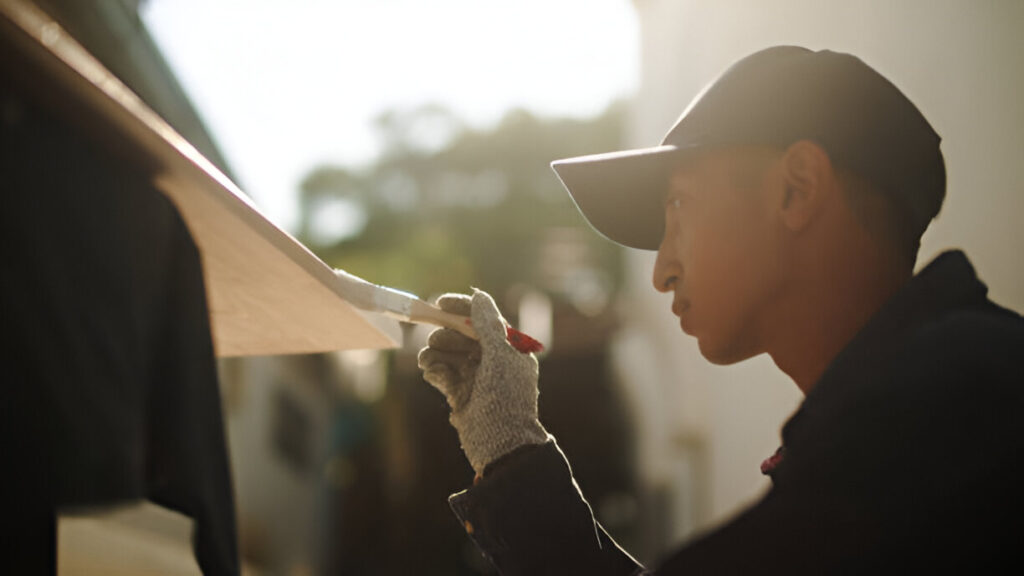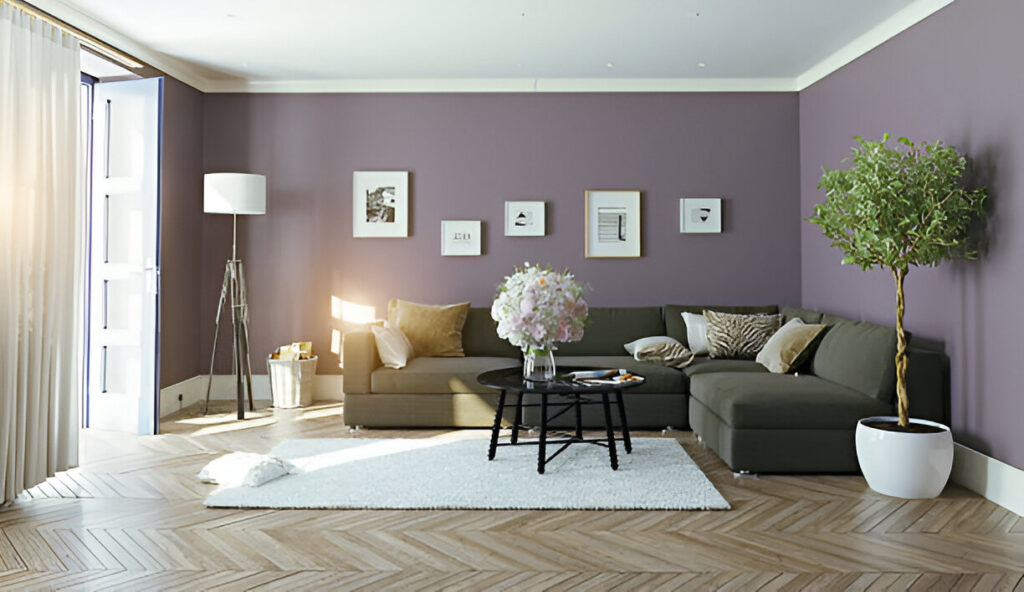
Let’s be honest—commercial painting is way more than “making it look nice.” It’s not about slapping a quick coat of white on office walls and moving on. It’s bigger. Way bigger.
Your building speaks before you do. The walls, the trim, the exterior—it’s your handshake to the world. If the paint is faded, chipped, or peeling, that handshake feels weak. Forgettable. Customers notice. Employees feel it too.
Now flip it. Imagine fresh colors that match your brand. Crisp lines. A clean, polished look inside and out. That says something different—it says you care, you’re serious, and you’re professional. And that’s exactly the standard CBS Professional Painters delivers across Vancouver and Portland.
In this article, we’ll unpack everything you need to know about commercial painting—why it matters, how to avoid costly mistakes, and why partnering with an experienced contractor like CBS Professional Painters turns paint into a lasting investment.
Quick Takeaways
- Commercial painting = branding + protection + durability.
- Bad prep equals wasted money. Period.
- Hire experience. The pros know the difference between “paint job” and “paint strategy.”
- Plan around your business hours. Don’t disrupt customers.
- With the right team, the results last years—not months.
So…What Exactly Is Commercial Painting?
It’s simple. But not that simple.
Commercial painting covers painting jobs on business properties—stores, offices, warehouses, apartments, restaurants, schools, medical buildings. Basically, if people work, shop, or visit there—it counts.
And it’s different from house painting. Why? Bigger scale. More complicated surfaces. Safety concerns. Time restrictions. Customers walking in and out while you’re working.
You’re not just painting a wall. You’re painting a brand.
The Scope
- Interiors: walls, ceilings, conference rooms, restrooms, reception areas. All need different finishes.
- Exteriors: siding, stucco, brick, metal, concrete. Each one demands different prep, primers, and coatings.
- Special surfaces: pipes, warehouse floors, steel beams. Not your everyday paint.
Why It Matters
Fresh paint isn’t just “cosmetic.” It’s functional.
- Protection. Sun, rain, mold, chemicals—paint shields your building. Skip it and you’ll be paying for repairs fast.
- Reputation. People trust businesses that look sharp. Dingy paint? Subconsciously screams neglect.
- Employee morale. Don’t underestimate this one. Workers are more motivated in clean, modern spaces.
Here’s a stat for you. Studies show businesses with well-maintained exteriors have better customer retention. No surprise, right? We all judge a book by its cover.

Planning a Commercial Painting Project
You don’t just wake up and say, “Let’s paint.” It takes planning.
Site Survey
First step? Walk the property. Look at the walls. The trim. The roofline. Check for cracks, rust, mildew, or peeling. That’s the stuff that eats away under paint if ignored.
This is why good contractors always start with prep. Pressure washing. Repairs. Sanding. Priming. Without it, the new paint will fail. No debate.
Choosing the Paint
Commercial painting = commercial paints. These aren’t the same cans you grab at the local hardware store.
You want:
- Durability. Resists scratches, moisture, UV.
- Easy clean. Especially in high-traffic areas like hallways or kitchens.
- Low-VOC options. Safer for indoor spaces where people work all day.
Flat vs. gloss? Depends. Flat hides flaws. Gloss cleans easier. Semi-gloss? Best of both.
Scheduling Without Chaos
Here’s where smart planning saves you headaches.
Interior painting during work hours? Disaster. Dust, wet paint signs, annoyed employees. The fix: night shifts or weekends.
Exteriors? You’re at the mercy of weather. No painting in rain. Too hot? Paint bubbles. Too cold? It won’t cure right.
A good contractor works around these issues. That’s part of the job.
Choosing the Right Contractor
Now this one’s huge.
Pick the wrong crew, and you’re redoing it in a year. Pick the right one, and you’ll forget about repainting for 7–10 years.
What to Look For
- Licensing & insurance. Don’t skip this. If they’re not insured and something happens, you’re on the hook.
- Experience. Commercial projects aren’t DIY. Look for portfolios, references, reviews.
- Transparent pricing. Itemized estimates. No vague “it depends.” You should know what you’re paying for.
- Process. Ask them: How do you prep? How many coats? What materials? If they dodge, walk away.
Red Flags
- Super low prices. Always a catch. Usually cheap paint or no prep.
- No references. If they can’t show past projects, why trust them?
- Bad communication. If they’re sloppy before the job, they’ll be worse during it.
Common Mistakes (and How to Dodge Them)
Seen it too many times. Here’s what businesses mess up:
- Skipping prep. Leads to peeling, bubbling. Always demand full prep.
- Wrong paint. Interior paint outside? It’ll crack. Exterior paint inside? Toxic smells.
- Bad timing. Painting in rain. Or in busy hours. Both = chaos.
- Cutting corners. One coat instead of two. Cheap brushes. Rushed work. Looks fine for a month, then downhill.
Tip: Don’t chase the lowest price. Chase value.
Real-Life Example
A retail store in Vancouver. Exterior looked tired—faded siding, chipped trim, dull entryway. Sales were steady, but foot traffic wasn’t great.
After a full exterior repaint—brand colors on trim, modern neutral siding, pressure wash + seal—the place looked new.
Result?
- 30% more walk-ins in the first month.
- Compliments from regulars.
- Building maintenance costs dropped.
That’s the power of doing commercial painting the right way.
Budget: What to Expect
Let’s talk numbers.
On average, commercial painting costs between $2–$6 per sq. ft. Interiors are often cheaper than exteriors (less prep, no weather delays).
What affects cost?
- Surface repairs needed.
- Paint type.
- Size of building.
- Accessibility (high-rise costs more, ladders/lifts needed).
Remember—painting is cheaper than replacing siding, drywall, or metal. It’s protection + aesthetics in one.

Color Trends for Businesses
Want to stand out? Color matters.
- Neutral grays + whites. Clean, modern, safe.
- Blues. Trustworthy, calm—great for medical offices.
- Greens. Fresh, eco-friendly vibes. Popular with health, wellness, and food industries.
- Bold accents. Red doors, orange trim, black windows. Small pops = big impression.
Don’t guess. Work with a pro who knows what looks good under your lighting, your architecture, your neighborhood.
FAQs
How long does commercial paint last?
Depends. Good prep + quality paint = 7–10 years outside, even longer inside.
Do we have to shut down during painting?
Not always. Many projects are done nights or weekends. Minimal disruption.
What’s the biggest mistake?
Hiring the cheapest contractor. You’ll pay twice when the paint fails early.
Conclusion
Commercial painting isn’t a “cosmetic upgrade.” It’s strategy. It’s protection. It’s branding. Done right, it pays off—through curb appeal, customer trust, employee pride, and long-term savings.
Don’t think of it as “paint.” Think of it as an investment in your business image.
Call to Action
Your building deserves more than a quick paint job. It deserves care. Precision. Lasting quality.
CBS Professional Painters delivers just that. Interior. Exterior. Cabinets. Full commercial painting services in Vancouver and Portland.👉 Call 503-209-7008 today for your free estimate. Let’s make your business look like it should—professional, fresh, unforgettable.

